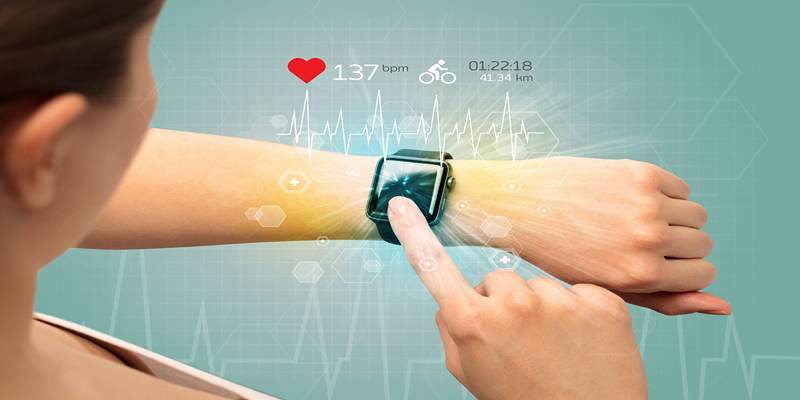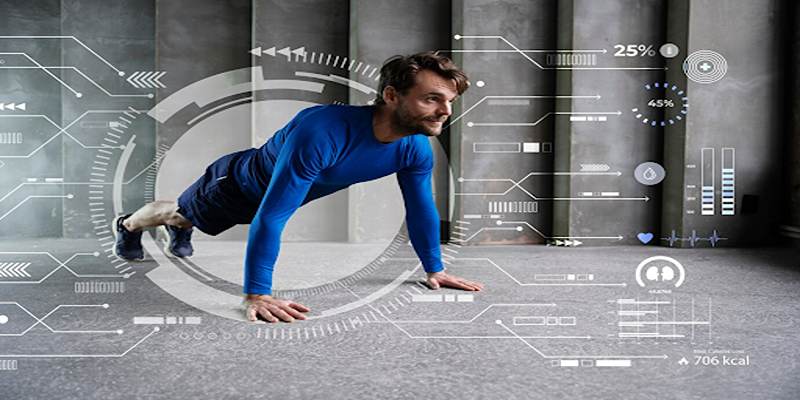Over the past ten years, wearable health gadgets have changed a lot. They now use artificial intelligence (AI) to give real-time health information. Wearables with AI are changing healthcare by making it more personalized and proactive. They can do things like track heart rates and look for possible health risks. People can take charge of their health with these gadgets because they collect biological data, look for patterns, and give immediate feedback. This post talks about how AI improves personal health gadgets, their main pros and cons, and what real-time monitoring means for everyday life.
The Role of AI in Wearable Health Devices
AI plays a pivotal role in improving the efficiency of wearable health devices by analyzing vast amounts of data in real time. These devices utilize machine learning algorithms to interpret user-generated data, offering precise health metrics and predictive insights. AI ensures that data collected by sensors is processed quickly and accurately, allowing users to receive meaningful health insights instantly.
Key Features Enabled by AI in Wearables
- Continuous Health Monitoring – Vital signs like blood pressure, heart rate, and oxygen levels can be tracked 24 hours a day, 7 days a week with AI.
- Personalized Health Insights – Machine learning learns from past data to make personalized health advice based on each person's unique health patterns.
- Early Disease Detection – Wearable tech powered by AI can find strange things and guess about possible health problems before they show up.
- Enhanced Data Accuracy – AI gets rid of noise and errors, which makes health measures more reliable.
- Integration with Healthcare Systems – Medical records can be synced with wearable tech, which lets doctors keep an eye on patients remotely and help if needed.
Real-Time Monitoring Capabilities of AI-Powered Wearables

Wearables equipped with AI are designed to provide instant feedback on health metrics. The integration of sensors and AI-powered analytics allows users to receive real-time updates on their well-being, promoting preventive healthcare. Real-time monitoring enables users to track changes in their health status and take immediate action when necessary.
Examples of Real-Time Monitoring in Wearables
- ECG and Heart Rate Monitoring – Devices like the Apple Watch and Fitbit Sense analyze heart rhythms, alerting users to irregularities such as atrial fibrillation.
- Blood Oxygen and Respiratory Rate Tracking – AI-driven wearables measure SpO2 levels and detect potential respiratory issues, which is particularly useful for individuals with chronic lung conditions.
- Sleep Analysis – AI assesses sleep patterns, identifying disturbances and suggesting improvements in sleep hygiene.
- Glucose Monitoring – Continuous glucose monitoring (CGM) devices, like the FreeStyle Libre, use AI to provide real-time blood sugar readings for diabetic patients, helping them manage their condition more effectively.
- Stress and Mental Health Tracking – Some wearables measure heart rate variability and skin conductance to assess stress levels and suggest relaxation techniques.
By continuously analyzing these health indicators, AI-powered wearables help individuals make informed lifestyle choices, reducing the risk of chronic illnesses and enabling better health management.
Benefits of AI in Wearable Health Devices
The integration of AI into wearable health devices offers numerous advantages, both for individuals and healthcare professionals. These benefits extend beyond personal health tracking and play a crucial role in improving overall public health outcomes.
For Users:
- Improved Health Awareness – Instant access to health data encourages proactive health management.
- Personalized Recommendations – AI customizes health suggestions based on user habits and medical history.
- Emergency Alerts – Wearables can notify emergency contacts or healthcare providers in case of abnormal readings, potentially saving lives.
- Enhanced Fitness Tracking – AI helps users optimize their workouts by analyzing performance and recovery metrics.
- Chronic Disease Management – Individuals with conditions such as hypertension or diabetes can use AI-powered wearables to monitor their health continuously, preventing complications.
For Healthcare Providers:
- Remote Patient Monitoring – Doctors can track patient health remotely, reducing hospital visits and improving patient outcomes.
- Data-Driven Diagnosis – AI assists in identifying patterns in large datasets, leading to more accurate diagnoses and treatment plans.
- Reduced Healthcare Costs – Preventative monitoring helps avoid expensive emergency treatments and hospital admissions.
- Efficient Management of Resources – AI-based wearables can help hospitals allocate resources more effectively by identifying patients who require urgent care.
- Better Post-Surgical Recovery Monitoring – AI wearables can track patients’ recovery progress after surgeries, alerting healthcare providers to potential complications.
Real-World Applications of AI in Wearable Health Monitoring
AI-powered wearable health devices are already making a significant impact in various healthcare settings. Their applications extend across multiple domains, improving personal health, professional sports training, and even workplace safety.
Sports and Athletic Performance

Athletes use AI-driven wearables to track performance metrics such as heart rate variability, oxygen consumption, and muscle fatigue. These insights help optimize training regimens and prevent injuries by identifying early signs of overtraining.
Elderly Care and Fall Detection
Wearable health devices with AI assist in monitoring the elderly by detecting falls and abnormal movements. If a fall occurs, the device can send an alert to caregivers or emergency services, ensuring timely assistance.
Corporate Wellness Programs
Companies integrate AI-powered wearables into employee wellness programs to encourage healthier lifestyles. These devices track employee activity levels, stress, and sleep quality, promoting workplace well-being and productivity.
Post-Surgical Recovery and Rehabilitation
Patients recovering from surgery can use AI wearables to monitor their rehabilitation progress. AI algorithms analyze movement patterns and vitals, ensuring that recovery milestones are met.
Conclusion
AI-driven wearable health devices are transforming the way individuals monitor their well-being, offering real-time insights and proactive healthcare solutions. These wearables enable continuous health tracking, early disease detection, and better chronic disease management. By integrating AI, wearable health devices provide accurate and meaningful data, empowering users to make informed decisions about their health.
